This is the third time I used this snake. I like this snake a lot. It's a common crimp mechanism fitted with an arm with content attached. Content can be made to appear as if it is being rolled. Double crimps can appear as if content is rolling other content. In this case, discs glued to arms glued to crimps, rotate in opposite directions to appear as a snake coiling or uncoiling.
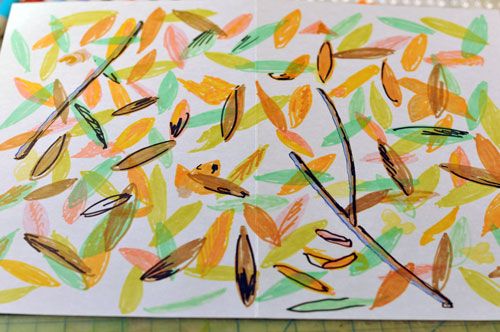
A small platform is created for the center of the card 1/2 inch high and attached 1/2 inch away from the central fold on the opposite page of the card. In the card opened position, the platform is stretched completely flat.

For some reason, I worked this part upside down ↓. The tabs that affix the platform can be glued either directly to the background surface or they can be fitted through slots and glued to the back of the card, thus mysteriously disappeared.
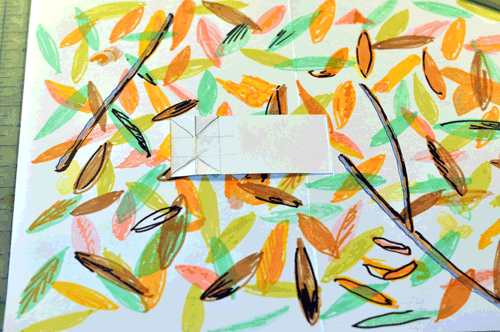
At the half opened position, the inserted platform forms a step 1/2 inch high. In the closed position, the platform is forced flat in the opposite direction from when it is stretched. Crimps made in the corner of the step are pushed in the opposite direction of the fold in the step, that is, the creases of the crimp operate opposite to the direction of the step in the platform. Arms attached to the crimps create an arcing motion of 90°. Crimps facing each other create arcing movements in opposite directions. (Incidentally, if the arms are connected to the opposite half of each crimp than the little triangles shown in the above animated GIF ↑, then the arms will flip as the crimps fold shut. The motion differs from it's opposite portion where an attached arm simply angles slightly and slides to closed or to open position without flipping as shown below.)

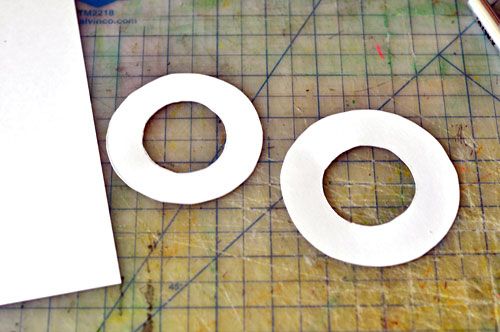
Discs drawn with a snake design are attached to the arms glued to the crimps in the platform step.

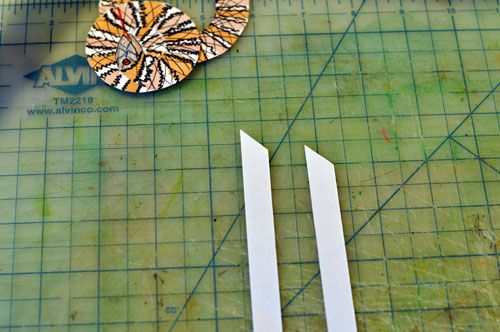
Now we're right side up ↓. Arms attached to half of each crimp ↓. The arms can extend from the crimp in either of three directions and they will each have the same effect.
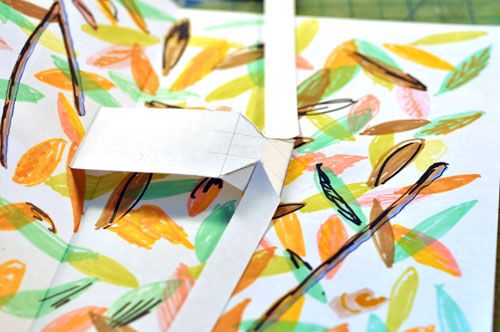
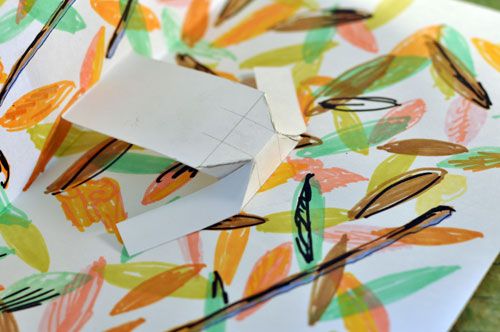
A mesh table built up of content upon posts just above the snake is covered with the same forest floor pattern material as the background of the card, so the snake appears to be nested between layers of forest floor material. The snake discs rotate in opposite directions and eerily mimic the motion of a real snake. The movement is concealed beneath forest floor content as a snake would be concealed.
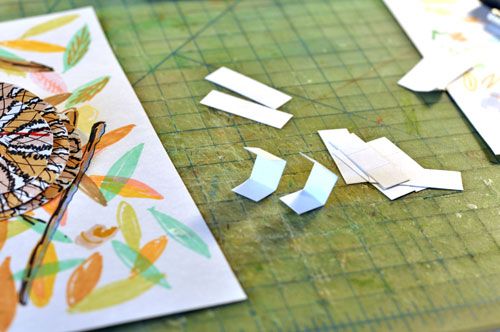
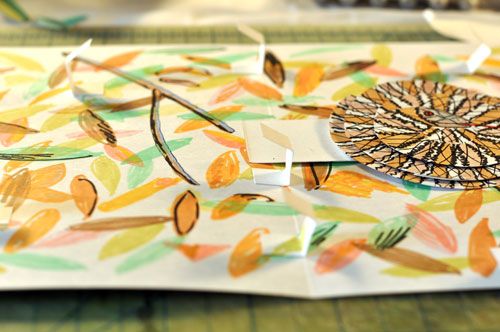
Posts for elevated table glued to background ↑, a few along the center, the rest randomly but still parallel on both sides of the central fold. New content will connect the surfaces of the posts ↓.

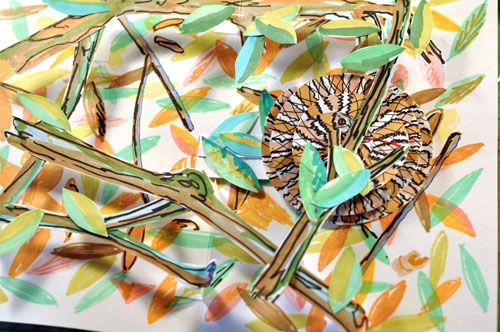
For the table to work, at least one of the posts must be situated along the central fold. All other posts are connected to the central posts one way or another. Additional posts are placed to the right and to the left of the central fold and aligned with it perfectly. To connect the posts with content and thus to form a net-like table, all the posts can be moved either to the extreme left or extreme right position, then connecting content glued in place. To check for accuracy, the entire table should move from flattened extreme left, to upright center, to flattened extreme right position as a single unit, an incomplete, see-through, slotted table without tugging and without any bulges. It is a very rigid interconnection of elevating posts that makes the partial table possible. In this case, the short incomplete table is made of branches and leaves, a matrix positioned on posts that act as paper columns and produces a reticulated table-like surface, a paper scrim, if you like.
Here is another, Cupcake Snake birthday card, with a video that shows how the snake action looks. It is a lot better with wispy but rigid camouflage table.
Here is another, Cupcake Snake birthday card, with a video that shows how the snake action looks. It is a lot better with wispy but rigid camouflage table.

No comments:
Post a Comment